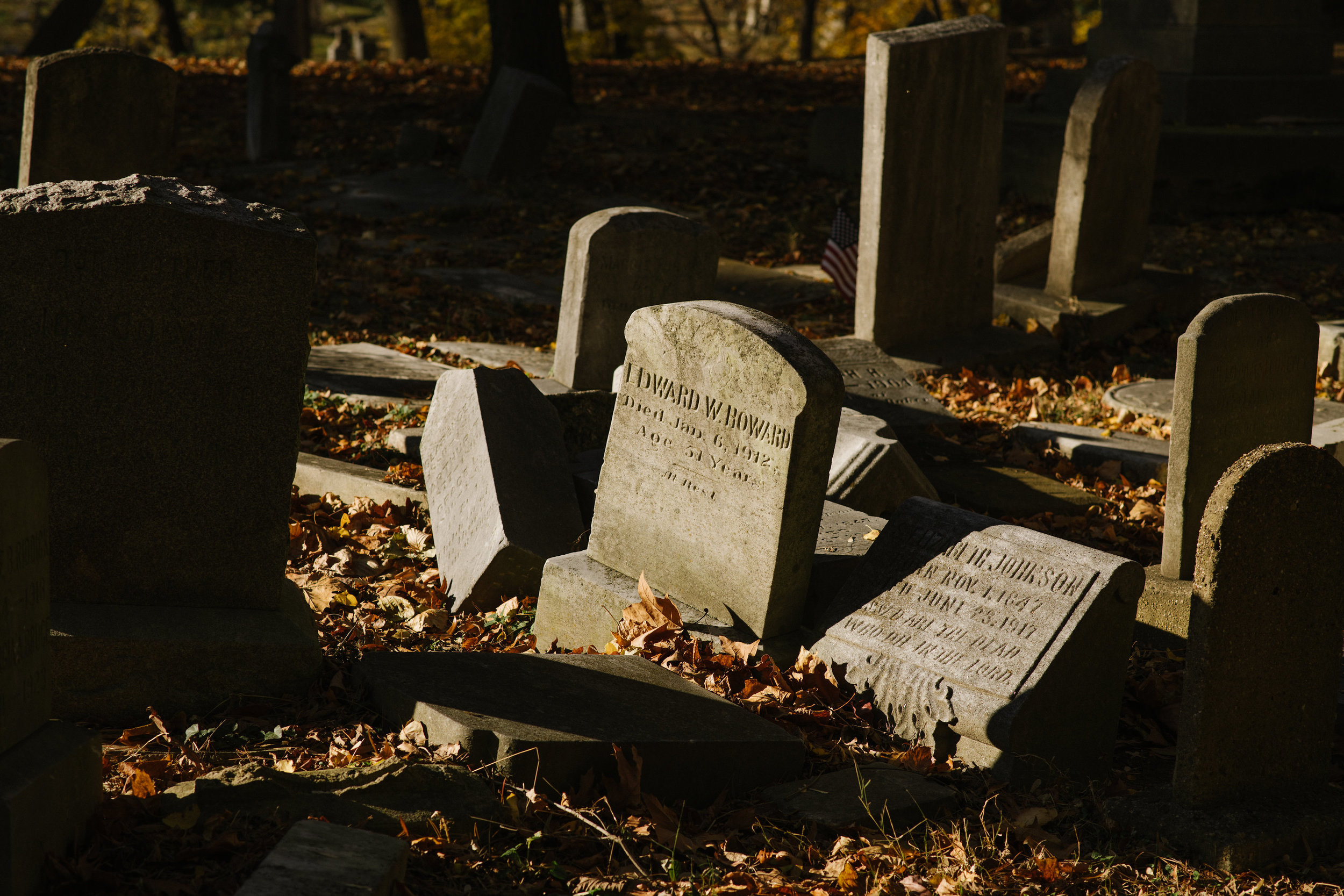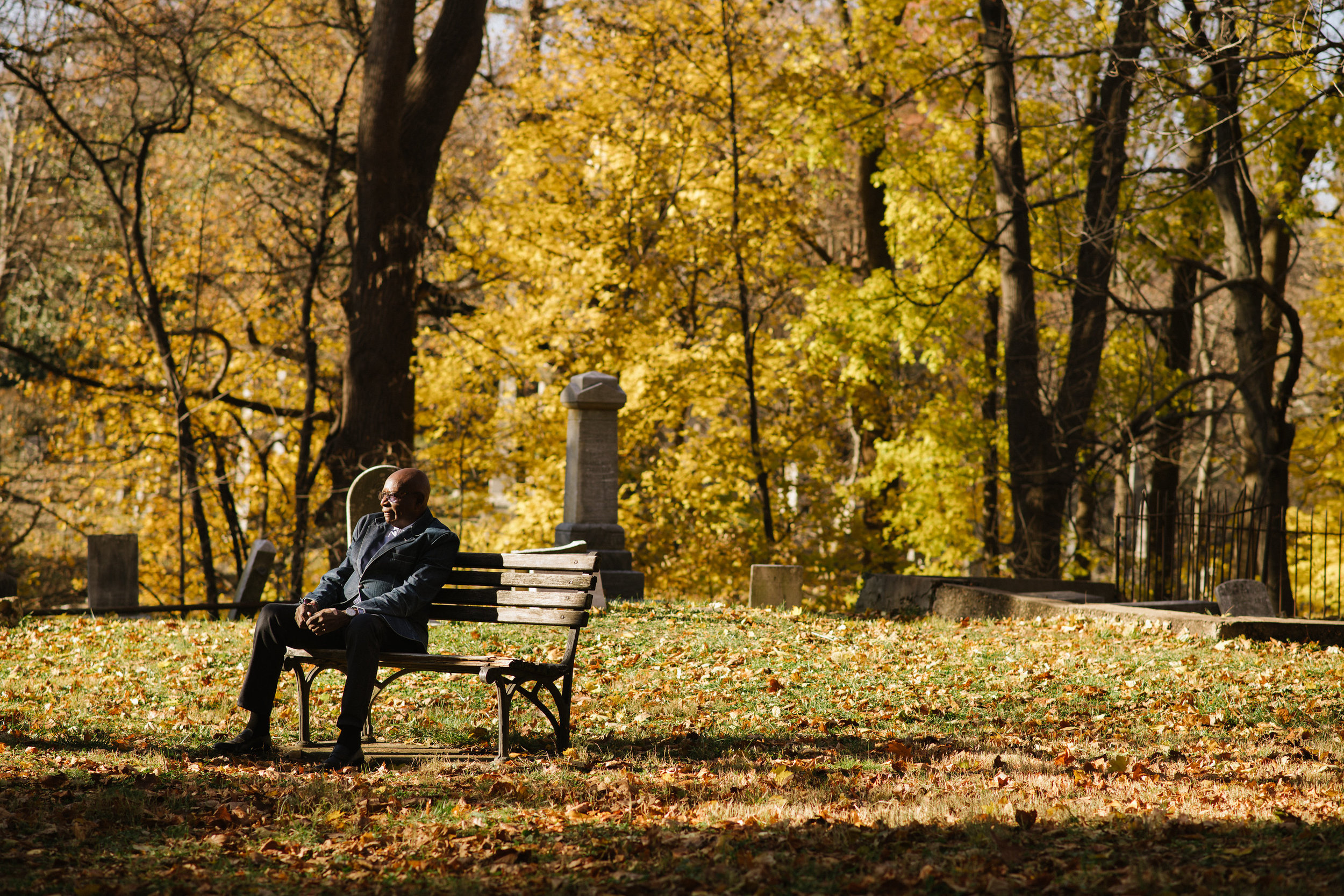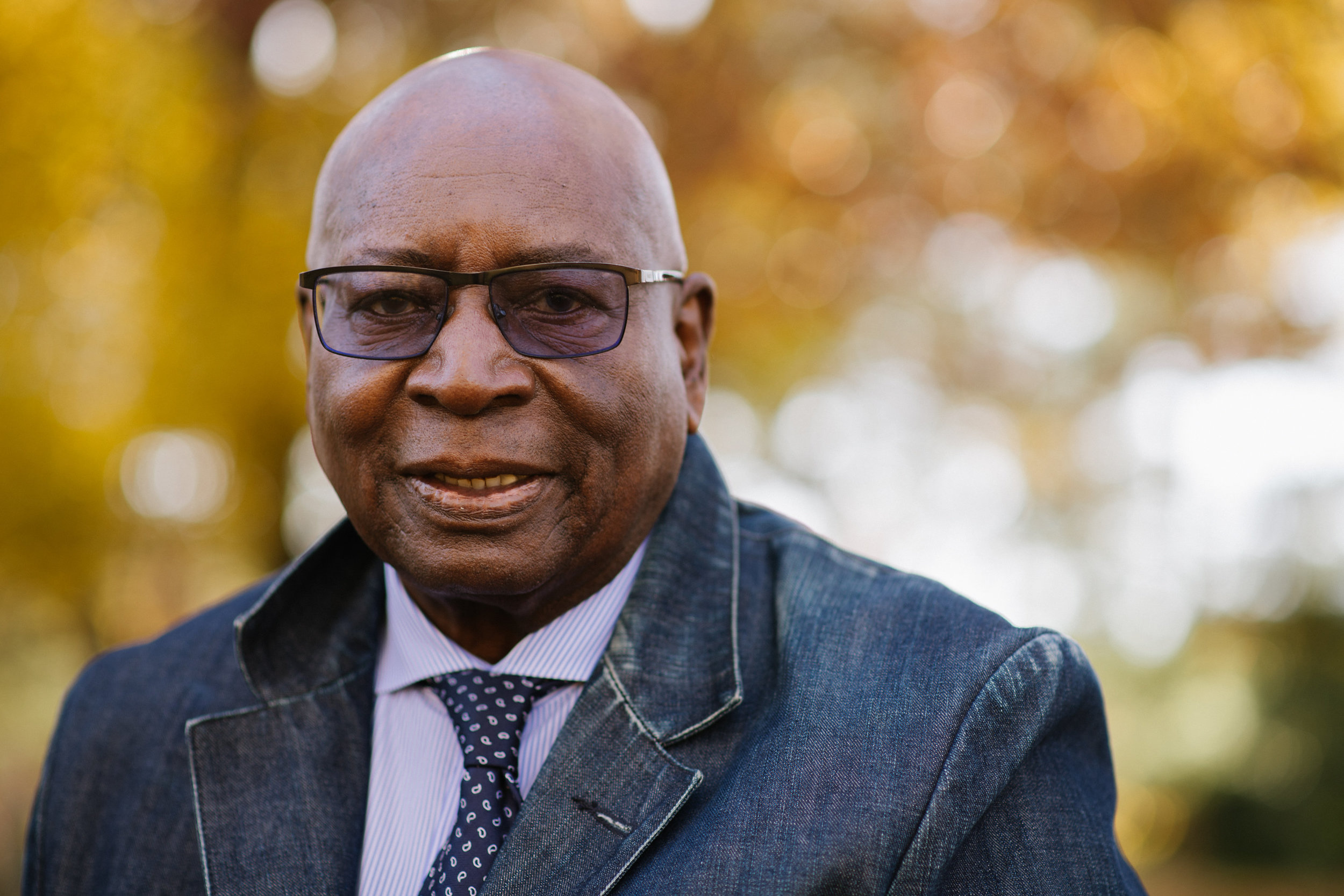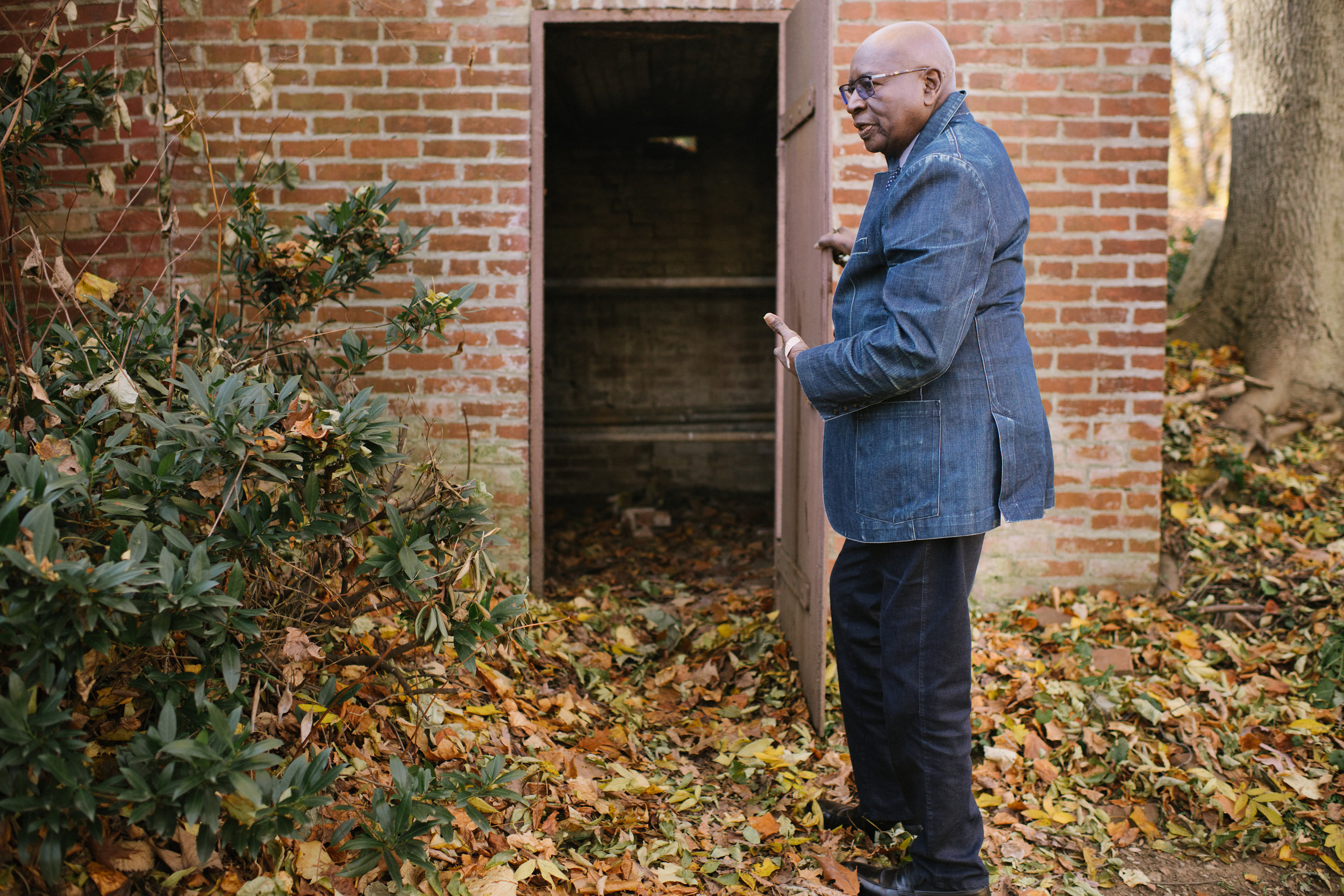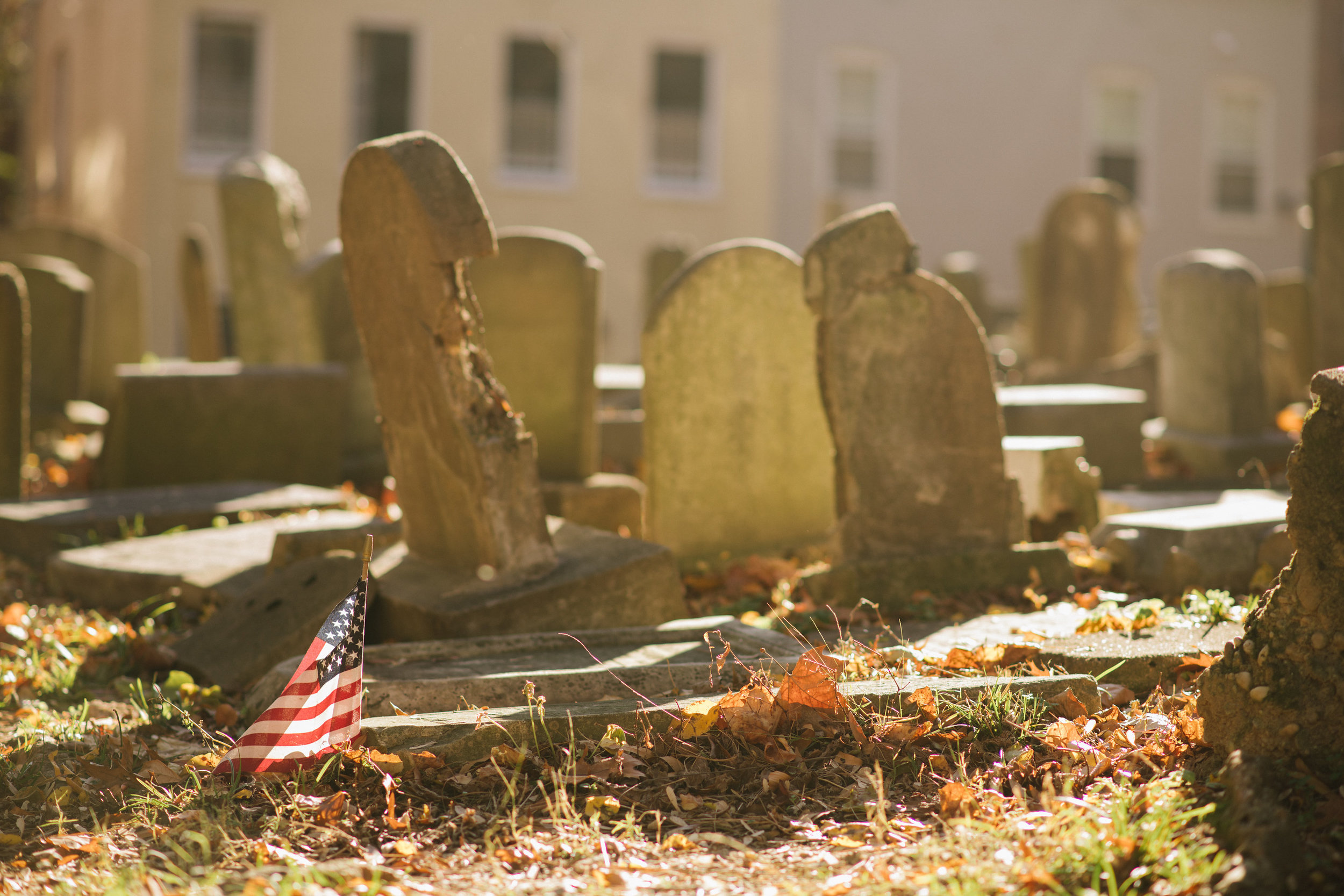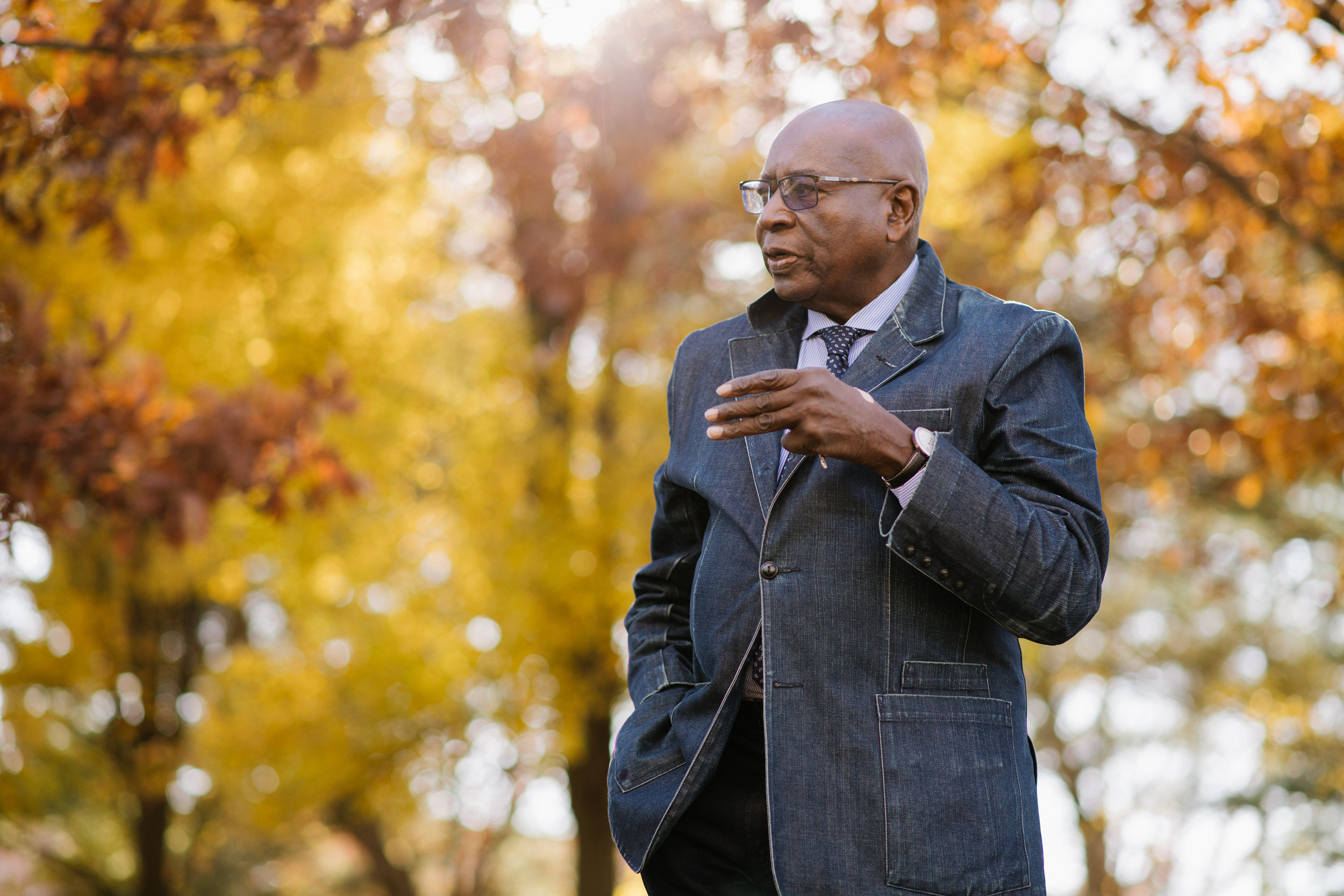‘I Think People & Communities Without Privilege Are At Risk’
Underneath the paws of neighborhood dogs out on their morning walks, Georgetown’s African-American community rests in pieces.
Broken gravestones mark the bodies of enslaved residents, freedmen and (mostly) African-American citizens at Mt. Zion / Female Union Band Society Cemetery. To the left, perfectly manicured Oak Hill cemetery honors prominent whites.
‘You look at our cemetery and you look at Oak Hill, and you have to ask the question: Why is this?’ says Dr. Thornell Page, head of Mt. Zion United Methodist’s building and cemetery committees.
The once interracial cemetery was founded in 1808 by Dumbarton United Methodist Church. In 1842, a forward-thinking society of free black women founded the adjacent Female Union Band Society Cemetery—the two eventually managed as one.
When Oak Hill Cemetery was completed in the early 1850s, many of the white burials were disinterred and moved next door. Mt. Zion United Methodist purchased the land, but as Georgetown gentrified, the cemetery that once served as a stop on the Underground Railroad was wiped off the map.
Dr. Page discovered the neglected plots in the 1970s as a member of the Afro-American Bicentennial Corporation—a group that identified and celebrated historic black communities and events nationwide.
‘Someone called to our attention that there is a cemetery in Georgetown, and they referred to it as the ‘slave’ cemetery. There was a concerted effort by some real estate developers interested in disinterring the bodies and using the land for apartments. That was just the kind of thing we were trying to prevent around the country.’
The Afro-American Bicentennial Corporation began a discussion with Georgetown, Dumbarton House, and nearby residents—eventually entering into a court case. The judge ruled that the cemetery was historically significant ground and couldn’t be used for commercial use.
For the next 40 years, it wasn’t used for much of anything—many of the headstones stolen, while others fell into further disrepair due to a lack of funding. Dr. Page and his wife had joined Mt. Zion United Methodist, and the cemetery’s restoration was in the back of his mind. In 2016—after successful careers in everything from development to tourism—he revisited the project.
‘I finally decided, with some of the other leaders, we better get this done. Otherwise we’ll repeat the same situation that was here before. So we began to strengthen the organization and elicit community interest.’
It’s estimated that more than 5,000 are buried in the two cemeteries’ three acres. Among them are school principals, property owners, and entrepreneurs. Through Mt. Zion / Female Union Band Society Cemetery’s foundation, the tombstones are currently being audited.
‘Many of the early slave cemeteries did not have headstones, they had wooden identification stones. Over time they deteriorated. We have many bodies with no markers. We have records, but we can’t do this in a perfect way. The ones that we cannot identify specifically, we may have a wall of honor for them.’
Dr. Page says his foundation is also attempting to identify relatives and organizations that were affiliated with the cemetery, many of whom will hopefully invest in the multi-million dollar restoration. By the end of 2018, a timeline and budget will be in place.
‘We want to use this space to commemorate the enslaved and free blacks that are interred here, and also use it as an education center about what happened to these people in Georgetown, their contributions, and how we can protect ourselves from this kind of thing happening again.’
Many Georgetown residents have a garden on the land. Others walk their dogs through the cemetery and pick up trash. Dr. Page says they’ve been supportive, though their relationship with the property will likely change over time.
‘As we develop, we may need to recover the land under the garden. There may even be some bodies under there. They understand that. At some point we’ll also have to deal with the dogs, because in our community, we perceive the cemetery to be sacred ground. But at this point, the neighbors are an asset, and we’d like to find a way to accommodate them.’
Dr. Page has been pleasantly surprised by the local interest from neighbors and outsiders alike. The City awarded the foundation at $200,000 grant, in addition to over $45,000 in donations from Georgetown organizations and residents. Others have expressed interest in clean-up efforts.
‘The cemetery was neglected for so long that I just assumed people over there didn’t care. I think it may have been more a matter of somebody creating interest. The momentum is there and it’s up to us to keep it going.’
Cemeteries nationwide face similar plights. Dr. Page says the foundation is attempting to develop a template for others to use when tackling their own restoration efforts. In doing so, he hopes to illuminate a crisis broader than any one race.
‘What happened in Georgetown is happening all over the city, and it’s my view that it has to stop. I just think people and communities without privilege in this country are at risk. And that’s not just black people. Whether they’re Latin American, Native American—if you’re without privilege, you’re taken advantage of. Mt. Zion / Female Union Band Society Cemetery is a good site to begin that discussion for enlightenment and support.’
As D.C’.s oldest black congregation struggles with the challenges that most small urban churches face—namely, an aging population with a fixed income—Dr. Page says it’s seeking opportunities for the next generation to get involved before it’s too late.
‘It’s my view that this nation, this experiment, is a great experiment—but the greatest threat to this experiment is not foreign, it’s domestic. And if we don’t find a way to reduce detention and oppression and destructiveness of the internal, this experiment is going to fall apart. This is just a small way for us to make our contribution to it.’
Now, more than ever, it seems to be a matter of life and death.
